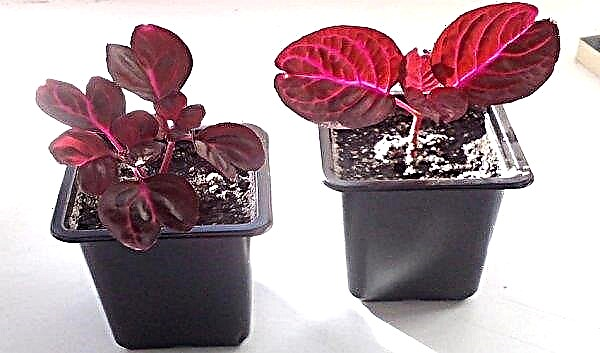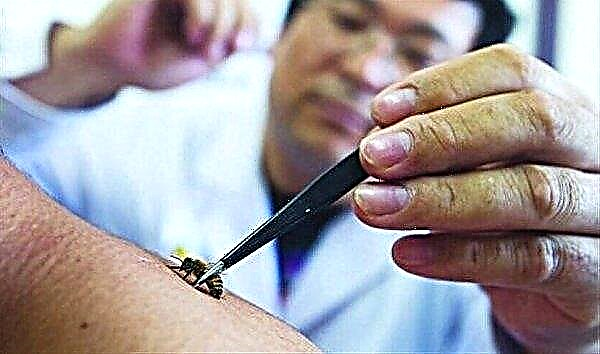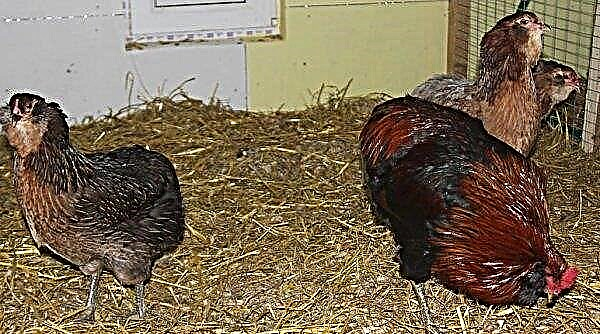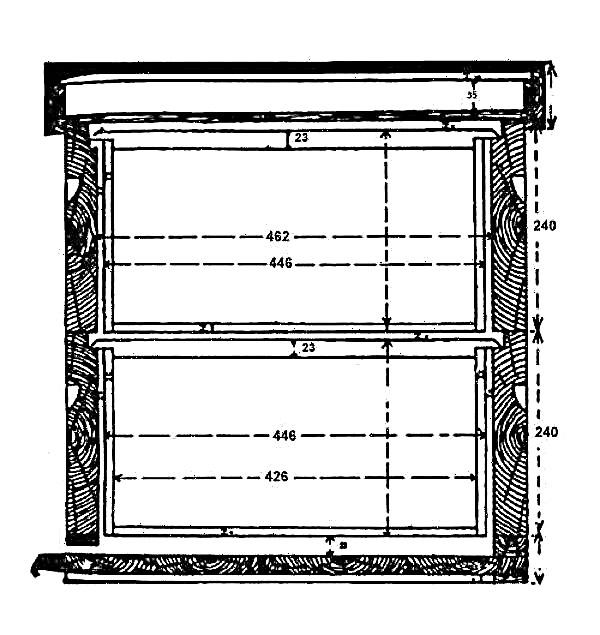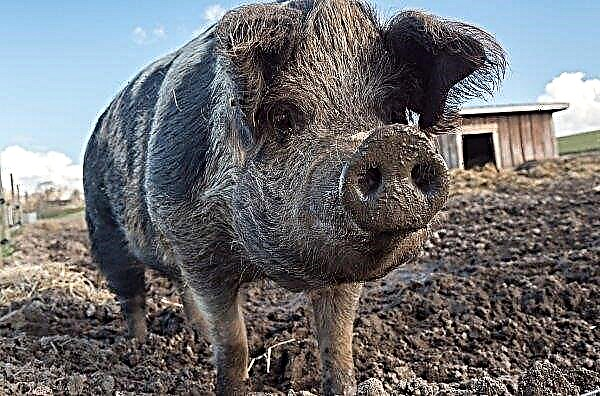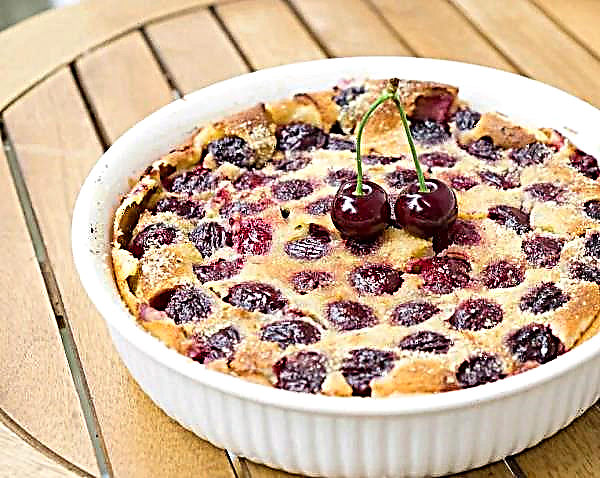Dwarf Leghorn (B-33) is an egg breed of chickens that is known for its high egg production. B-33 is popular among breeders due to its high productivity and low maintenance costs (feed consumption is minimal). Let's take a closer look at what else this breed is significant.
The origin of the breed dwarf leggorn V-33
Scientists obtained a new breed by introducing a special dwarf gene in the DNA of Leghorn, which, in turn, was bred at the end of the 19th century in an Italian town called Livorno. Later, scientists from different countries worked on improving the breed. The breed B-33 itself appeared a little later in Russia. Scientists at the All-Russian Research and Technological Institute of Poultry were able to bring out a miniature copy of the leghorn. At the same time, B-33 differs from leghorn only in appearance, indicators of bird productivity are almost identical.
Scientists at the All-Russian Research and Technological Institute of Poultry were able to bring out a miniature copy of the leghorn. At the same time, B-33 differs from leghorn only in appearance, indicators of bird productivity are almost identical.
Did you know? In the English manner, the name of the port of Livorno sounds like “leghorn”, this is how the name of the breed happened. These birds are also called white mini-chickens.
Description
Let's take a closer look at the main characteristics of the appearance and productivity of the dwarf leghorn.
Appearance characteristic
Features of appearance:
| Appearance | |
| Head | Medium Round |
| Crest | Leaf-shaped, erect in roosters, in chickens hanging on one side |
| Beak | Powerful yellow |
| Neck | Elongated, not thick |
| Chest | Wide, deep |
| Stomach | Volume |
| Wings | Strong, the bird is able to fly |
| Tail | Lush, raised by roosters, lowered by chickens. Located at an angle of 40–45 ° to the body |
| Paws | Not feathered, thin |
| Plumage and color | Thick white |
Temperament
Dwarf Leggors are friendly. Birds practically do not fight among themselves, except for the struggle of roosters for leadership positions, in this regard, it is recommended to keep no more than one male in the house with other birds. Dwarf leggors are quite active and inquisitive.
Advantages and disadvantages
The main advantages of birds of this breed:
- high egg production;
- large eggs for dwarf breed;
- good chick survival (up to 95%);
- a small territory is sufficient for their maintenance;
- well acclimatized;
- feed consumption is on average 35% less than other mini-breeds;
- there are no specific breed diseases;
- friendly character.
Did you know? Chickens of this breed, who have red earlobes, are considered defective.
Disadvantages of dwarf leggorn:
- lost instinct of incubation;
- with an unbalanced diet, egg production decreases;
- the taste of meat is quite low.
How to contain Leghorn B-33
Like every breed, dwarf leghorn has features for maintenance and care that must be considered when breeding. Let's look at them in more detail.
Arrangement of a chicken coop
For birds of the breed dwarf leghorn, content in cages or small chicken coops is excellent. Basic requirements for the house:
- should be warm - to maintain egg production, the temperature should not be lower than +5 ° C;
- lack of drafts, but good ventilation;
- should be in a quiet place: the bird is very scared of loud noises;
- must be litter (you can use hay, straw or sawdust): thickness - 50 cm, change as necessary;
- optimal indicators of air humidity - 45–65%;
- carry out cleaning at least once a season and once a year - disinfection;
- perches are located at a height of 80–100 cm;
- To maintain productivity, it is necessary that daylight hours last at least 12 hours.
Summer paddock
A small area is sufficient for walking a bird. It is important to take into account that the B-33 is capable of flying, therefore it is important that there is a roof or a fence with a height of at least 1.5 m
Nest arrangement
Layers need to be provided with enough nests. As a rule, 2–3 hens per nest. It is advisable to place the nests in a quiet place, opposite the window, next to the perches.
Feeding troughs and drinking bowls
Feeders and drinking bowls are placed so that they:
- did not roll over;
- easily removed for washing.
Ventilation
Drafts are undesirable for chickens, but they also need fresh air. For airing in a chicken coop equip a special window.
Diet
B-33 rush only with proper nutrition, so the diet of the bird is extremely important. Feed should be of high quality and balanced. If it is not possible to feed poultry with industrial feeds, then for healthy growth the diet should include dry and wet food. For the preparation of dry nutrition, cereals are mixed: oats, wheat, barley and corn. Wet foods are prepared on the basis of boiled potatoes and other vegetables (zucchini, cabbage, beets). Wet foods should not be abused, they should be one third of the diet.
Important! Since the metabolism of these birds is slowed due to the dwarf gene, due to an overabundance or lack of some elements, diseases are possible (twisting of the fingers, up to the loss of paws). One of the acceptable options for feeding is ready-made compound feed for agricultural birds, because all micro and macro elements are balanced in it.
It is important to enrich the bird’s nutrition with mineral and vitamin substances, for this you can add eggshell, chalk, salt, bran to the feed or use vitamin complexes, premixes. In the summer, it is imperative for the bird to eat fresh herbs, in winter it can be replaced with boiled vegetables. Chickens are fed 3 times a day. Breakfast and dinner often consist of dry food, while for lunch they give wet food. In the feeders, it is recommended to pour gravel to improve digestion. Water in birds should always be clean, in the public domain. In winter, it is recommended to heat it.
Herd replacement planned
The highest productivity of chickens is observed in the first year of their life, then it decreases. Thus, it is recommended to change the herd when the “parent” is one year old.
Shedding and a break in egg laying
One of the distinctive qualities of the dwarf leghorn breed is that the birds are able to rush during molting in the same way as before it. In order to help birds cope with this difficult period, they are recommended to reduce daylight hours, while egg production will decrease, but hens will quickly overcome the molting process.
How to breed chickens
B-33 chicks are most often born healthy and strong, the average survival rate of young animals is 95%. Since this bird has practically lost its instinct of incubation, for breeding chicks, you can lay eggs with hens of hens of other breeds or use an incubator. When breeding, it is advisable not to cross the dwarf leghorn with other varieties, because this adversely affects breed standards.
Feeding organization
One of the conditions for the survival of chicks is proper nutrition. Features of feeding chickens:
- on the first day of life, the chicks are given boiled yolk and cottage cheese;
- from the second - boiled millet;
- from the fourth - add fresh herbs;
- transfer chickens to the diet of adult hens after 3 weeks of life.

Care
Hatched chicks are left in the incubator until the fluff dries on them until the end. Otherwise, the chicks can catch a cold and get sick. After that, the kids are transplanted into a cardboard box and put it in a warm and dry place. When the kids grow up and get a little stronger, they can be taken for a walk. During the growth period, it is important to provide the chicks with a balanced diet. Their health and productivity in the future depend on this.
Possible diseases and their prevention
The breed is distinguished by its health, birds rarely get sick. However, high crowding, unbalanced nutrition, inappropriate conditions of detention can lead to diseases. Let's look at some of them.
- Salmonellosis - Infectious disease of chickens caused by Salmonella bacteria. The main symptoms of the disease: lack of appetite, lethargy, apathy, tearing, pus from the eyes, foamy feces, limping, swelling and inflammation of the peritoneum / cesspool. The treatment is carried out with antimicrobial agents (Sulfanilamide, Biomycin, Chloramphenicol). Be sure to disinfect the chicken coop. Sick chickens are separated from healthy ones. The latter for prevention are given water with chloramphenicol or potassium permanganate.
- Pullorosis - an infectious disease that affects the intestines of chickens. The main symptoms of the disease: refusal of food, body temperature rises to +44 ° C, decreased motor activity, lethargy, loose stool with white bloom. For treatment, sulfonamide drugs, Tetracycline, and Biomycin are used. Sick birds are separated from healthy birds. In the case when antibiotics do not help, all sick birds are destroyed, and the chicken coop is disinfected.
- Avitaminosis - A disease that develops from a lack of minerals in poultry nutrition. The main symptoms of the disease: weight loss, loss of plumage, lethargy, inflammation of the eyes, pale color of the crest and earrings, problems in the intestines. For treatment, vitamin and mineral supplements and mash mixes are added to the chicken diet.
It should also be borne in mind that B-33 hens react very painfully to loud sounds and noise, from which they can be frightened and injured (even killed). Dwarf leghorn birds are widespread and delight their breeders with extremely high egg production. They are also called “ideal laying hens,” since they consume food less than their counterparts, and their egg production is increased. These birds are easy to maintain and care, they are an excellent option for both beginners and experienced breeders.
They are also called “ideal laying hens,” since they consume food less than their counterparts, and their egg production is increased. These birds are easy to maintain and care, they are an excellent option for both beginners and experienced breeders.




